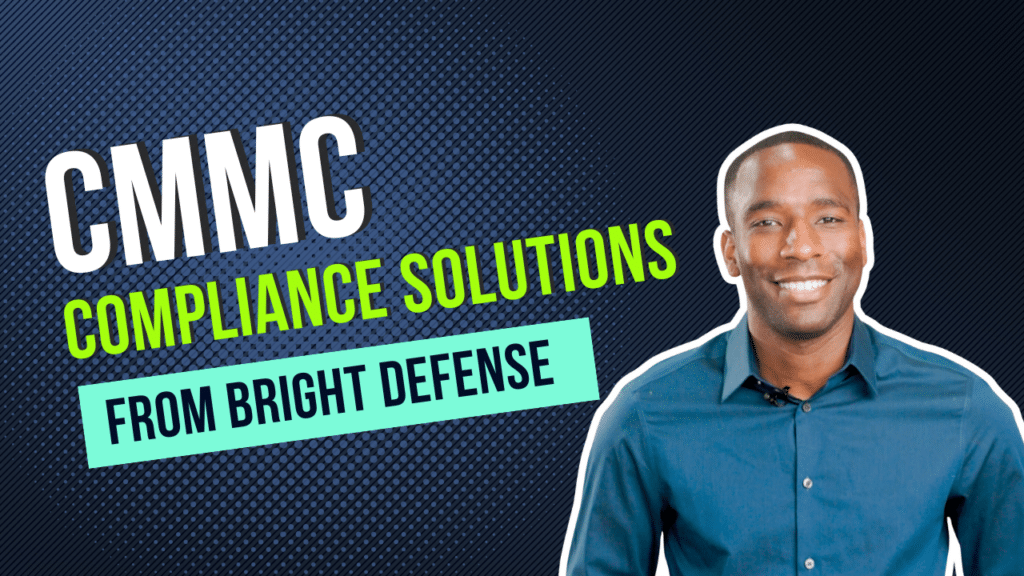
Tim Mektrakarn
February 26, 2025
How to Become SOC 2 Compliant
Introduction
With data being a company’s most important and valuable resource, security and privacy of customer data have become paramount. This is where SOC 2 certification steps in, playing a crucial role in ensuring that organizations manage customer data with the highest standards of security and privacy. Aimed primarily at service organizations storing customer data in the cloud, SOC 2 compliance isn’t just a regulatory requirement—it’s a testament to an organization’s commitment to data protection. Whether you’re a cloud computing provider, SaaS company, or any business handling significant amounts of customer data, achieving SOC 2 compliance is essential. This blog article will walk you through the steps on how to become SOC 2 compliant.
Benefits of SOC 2 Compliance
The benefits of becoming SOC 2 compliant extend far beyond meeting regulatory requirements. Organizations that achieve SOC 2 certification unlock a myriad of advantages, including enhanced customer trust, improved risk management, and a competitive edge in the marketplace. Customers today are more aware and concerned about their data’s security, and displaying a SOC 2 certification is a clear indication that an organization prioritizes data protection. Furthermore, it streamlines processes, making them more efficient and secure, which in turn reduces the risk of data breaches and other security incidents. Ultimately, SOC 2 certification is not just about securing data; it’s about securing business growth and success in an increasingly data-driven world.
Understanding SOC 2 Compliance
At its core, SOC 2 plays a pivotal role in fortifying data security and privacy. By adhering to the SOC 2 standards, organizations not only safeguard against unauthorized access and data theft but also demonstrate a robust commitment to data integrity. This commitment is critical, as it helps build trust with customers and partners, ensuring them that their data is in safe hands. Moreover, SOC 2 compliance provides organizations with a competitive advantage, setting them apart in a marketplace where consumers are increasingly concerned about privacy and security.
Understanding the types of SOC 2 reports is essential for organizations embarking on the compliance journey. There are two main types: Type I and Type II. The SOC 2 Type I report assesses the design of security processes at a specific point in time, essentially providing a snapshot of an organization’s control environment. On the other hand, the SOC 2 Type II report takes a more comprehensive approach by evaluating the effectiveness of these controls over a defined period, usually a minimum of six months.

The SOC 2 Compliance Framework
The Trust Services Criteria form the foundation of SOC 2 certification, setting forth the principles that organizations must uphold to protect and manage customer data responsibly. These criteria—Security, Availability, Processing Integrity, Confidentiality, and Privacy—serve as the guidelines for developing, implementing, and maintaining the controls necessary to ensure the security and privacy of customer information.
Common Trust Services Criteria
Security is the bedrock of the Trust Services Criteria, requiring organizations to protect information and systems from unauthorized access, disclosure, and damage. This criterion emphasizes the need for effective information security policies, network and application firewalls, intrusion detection, and other preventive measures to safeguard data integrity and availability.
Availability pertains to the accessibility of the system, products, or services as stipulated by a contract or service agreement. This criterion ensures that systems are operational and available for use as promised, necessitating performance monitoring, disaster recovery, and business continuity plans to mitigate downtime and system failures.
Confidentiality involves protecting information designated as confidential from unauthorized access and disclosure. This criterion applies to data that is not intended for public disclosure, and thus requires encryption, access controls, and stringent data management policies to maintain confidentiality.
Additional TSC’s
Processing Integrity focuses on the proper and valid processing of the client’s information, ensuring that systems perform their functions free of errors, delays, unauthorized or incomplete processing. Organizations must implement process monitoring and quality assurance procedures to uphold this criterion.
Privacy addresses the system’s collection, use, retention, disclosure, and disposal of personal information in conformity with an organization’s privacy notice and principles consistent with the AICPA’s generally accepted privacy principles. This criterion requires organizations to implement measures to protect personal information against unauthorized access and to respect user privacy preferences.
These criteria guide the compliance process by providing a structured framework for evaluating and managing risks associated with data security and privacy. Organizations must assess their current controls against these criteria, identify gaps, and implement necessary measures to ensure compliance. This process involves a comprehensive evaluation of IT and data management practices, from how data is collected and stored to how it is protected and shared. By adhering to the Trust Services Criteria, organizations can demonstrate their commitment to data security and privacy, earning the trust of clients and stakeholders alike.
Preparing for SOC 2 Compliance
Preparing for SOC 2 compliance is a critical step for organizations aiming to secure their data management processes and reassure clients of their commitment to data protection. This preparation phase involves a series of strategic actions that lay the groundwork for a successful SOC 2 audit. Here’s how organizations can navigate this phase effectively:
Conducting a Gap Analysis: Identifying Where Your Organization Currently Stands
The journey towards SOC 2 compliance begins with a thorough gap analysis. This process involves reviewing your organization’s current security and privacy controls against the SOC 2 requirements. By identifying where your practices align with the Trust Services Criteria and where they fall short, you can pinpoint specific areas that need improvement. A gap analysis not only highlights vulnerabilities in your data protection efforts but also sets the stage for targeted remediation efforts.

Developing a Remediation Plan to Address Identified Gaps
Once you’ve identified the gaps, the next step is to develop a comprehensive remediation plan. This plan should detail the actions required to address each gap, including timelines, responsibilities, and resources needed. Whether it’s updating policies, enhancing technical controls, or training staff on new procedures, each remediation action must be clearly defined to ensure nothing is overlooked. Effective remediation is essential for building a robust control environment that meets SOC 2 standards.
Implementing Necessary Security Measures and Policies
With a remediation plan in hand, the focus shifts to implementation. This stage involves putting the necessary security measures and policies into practice. From encrypting data to establishing incident response protocols, each action strengthens your organization’s security posture. It’s crucial to document these measures meticulously, as this documentation will serve as evidence of compliance during the SOC 2 audit. Implementing these measures is not just about ticking boxes for compliance; it’s about fostering a culture of security within the organization.
Choosing a SOC 2 Auditor: What to Look for and How to Prepare
Selecting the right SOC 2 auditor is paramount. Look for auditors with a strong track record in your industry and a deep understanding of the SOC 2 framework. A qualified auditor will not only assess your compliance but also provide insights into how you can improve your controls. To prepare for the audit, ensure all relevant documentation is organized and accessible, and brief your team on what to expect. The auditor will review your policies, procedures, and evidence of implementation, so it’s essential that your organization is ready to showcase its commitment to SOC 2 compliance.

The SOC 2 Audit Process
Navigating the SOC 2 audit process can be a daunting task for organizations seeking to affirm their commitment to data security and privacy. However, with a structured approach, the audit can become a manageable and even rewarding journey towards compliance. Here’s a step-by-step guide to the SOC 2 audit process, including tips on documentation and overcoming common challenges.
Step-by-Step Guide Through the Audit Process
- Engage a Qualified Auditor: Begin by selecting an auditor or audit firm that specializes in SOC 2 assessments and has experience in your industry. This choice is crucial, as the auditor will guide you through the compliance requirements and evaluate your organization’s practices.
- Pre-Audit Meeting: Meet with the auditor to discuss the scope of the audit, including the Trust Services Criteria to be evaluated and any specific system components to be included. This meeting sets the expectations and timeline for the audit process.
- Evidence Collection and Review: The auditor will provide a list of evidence required to demonstrate compliance with the SOC 2 criteria. This often includes policies, procedures, system configurations, and records of operational practices.
- Testing: The auditor conducts tests of your controls to verify that they are designed appropriately and operating effectively. This may involve observing processes, inspecting documents, and interviewing staff.
- Report Drafting: After testing, the auditor drafts the SOC 2 report, which includes the auditor’s opinion on your compliance and details about the control environment, tests performed, and the results of those tests.
- Review and Finalization: You’ll have the opportunity to review the draft report for accuracy and completeness before it’s finalized. This is the time to clarify any misunderstandings or provide additional information.
- Report Issuance: Once finalized, the auditor issues the SOC 2 report. For Type II reports, this process repeats annually to maintain compliance status.

Documentation and Evidence Collection: What You Need and How to Organize It
Gathering and organizing documentation is a critical component of the SOC 2 audit process. You’ll need to provide evidence such as:
- Security policies and procedures.
- Incident response plans.
- System and network architecture diagrams.
- Access control lists.
- Change management records.
- Activity logs.
Organize this evidence by the relevant Trust Services Criteria and maintain an index for easy retrieval. Ensure that all documentation is current and accurately reflects your practices.
Common Challenges During the Audit and How to Address Them
- Lack of Preparation: Organizations often underestimate the level of detail required for SOC 2 compliance. Address this by conducting a thorough gap analysis and remediation before the audit begins.
- Documentation Gaps: Incomplete or outdated documentation can hinder the audit process. Regularly review and update your documentation to ensure it reflects current practices.
- Communication Breakdowns: Effective communication with the auditor is essential. Designate a point of contact within your organization to coordinate with the auditor and address questions promptly.
- Change Management: Changes in systems or processes during the audit can complicate the evaluation of controls. Implement a robust change management process to document changes and communicate them to the auditor.
Maintaining SOC 2 Compliance
Maintaining SOC 2 compliance is an ongoing process that requires continuous attention and adaptation to changing technologies and business operations. Once an organization achieves SOC 2 compliance, the work isn’t over. The landscape of cybersecurity threats is constantly evolving, and so too must your organization’s defenses. Here’s how to ensure ongoing compliance and safeguard your organization’s reputation for data security and privacy.
Importance of Ongoing Compliance and Continuous Monitoring
Continuous monitoring stands as the bedrock of maintaining SOC 2 compliance. It ensures that the controls and processes that were put in place not only remain effective but also evolve with the changing cyber threat landscape. Ongoing compliance is crucial for detecting and addressing new vulnerabilities before they can be exploited, thereby minimizing the risk of data breaches and maintaining the trust of clients and stakeholders.
Tips for Maintaining Compliance Through Changes in Technology and Business Operations
- Stay Informed: Keep abreast of the latest cybersecurity trends, threats, and technologies. This knowledge can help you anticipate changes that might affect your compliance status.
- Embrace Automation: Where possible, use automation to streamline compliance processes. Automated tools can help in continuous monitoring of controls, detecting vulnerabilities, and enforcing policies.
- Training and Awareness: Regularly train employees on the importance of SOC 2 compliance and their role in maintaining it. This includes updates on new policies or changes to existing procedures.
- Vendor Management: Ensure that third-party vendors and partners also adhere to SOC 2 standards, especially if they handle or have access to your customer data.
Regularly Reviewing and Updating Security Measures and Policies
The effectiveness of security measures and policies can diminish over time as new threats emerge and business operations evolve. Regular reviews allow an organization to update these measures and policies to reflect current best practices and compliance requirements.
- Schedule Regular Reviews: Set a schedule for regular reviews of your security measures and policies. This could be annually or bi-annually, depending on your organization’s size and complexity.
- Conduct Internal Audits: Periodic internal audits can help identify areas where compliance might be slipping before it becomes a problem. These audits can mimic the external SOC 2 audit process to ensure that your organization remains prepared.
- Feedback Loops: Create mechanisms for feedback from employees, customers, and IT teams on the effectiveness of security measures. This feedback can be invaluable in identifying areas for improvement.
- Document Changes: Any changes to policies or controls should be thoroughly documented, including the rationale for the change and any impact assessments conducted. This documentation is crucial for demonstrating compliance during future SOC 2 audits.
Maintaining SOC 2 compliance is not just about adhering to a set of standards; it’s about embedding a culture of security and privacy within the organization. By prioritizing ongoing compliance and continuous monitoring, organizations can not only protect their customer data but also enhance their business resilience and reputation in the digital marketplace.

Leveraging SOC 2 Compliance
Leveraging SOC 2 compliance effectively can transform it from a mere regulatory necessity into a significant competitive advantage. In an era where data breaches frequently make headlines and consumers are increasingly concerned about privacy, SOC 2 compliance becomes a powerful tool in establishing trust and differentiating your business in the market. Here’s how to use SOC 2 compliance to your advantage:
Gaining a Competitive Advantage
- Highlight Security as a Selling Point: In proposals, pitches, and sales meetings, emphasize your SOC 2 compliance to demonstrate your organization’s commitment to security and privacy. This assurance can be a deciding factor for potential clients who are weighing their options in a crowded marketplace.
- Enhance Credibility with Prospects: Use SOC 2 compliance to reassure prospects that their data will be handled securely and in accordance with industry best practices. This can speed up the decision-making process and increase conversion rates.
- Strengthen Client Retention: For existing clients, your compliance reassures them that they’ve made the right choice, strengthening client loyalty and retention. It signals that you’re committed to maintaining high standards of data protection, which is critical for long-term partnerships.
Conclusion
The journey through how to become SOC 2 compliant is much more than a pathway to meeting regulatory standards; it’s a commitment to excellence in data security and privacy that can significantly impact the success and trustworthiness of a business. SOC 2 compliance isn’t just about safeguarding data; it’s about building a foundation of trust with customers, enhancing operational efficiency, and securing a competitive edge in the increasingly digital marketplace. This journey demands a strategic approach, where organizations not only aim to meet the set standards but also strive to embed these practices into their core operational ethos.
The true value of compliance extends far beyond the realm of regulatory obligations. It lies in the peace of mind it offers to customers, the resilience it builds within the organization against cyber threats, and the culture of continuous improvement it fosters. As we navigate through the complexities of the digital age, embracing these values can be a significant differentiator for businesses aiming for long-term success and sustainability.
Bright Defense Eases SOC 2 Compliance
Now is the time to take a closer look at your organization’s current security measures. Assess how well they align with the SOC 2 Trust Services Criteria and where there might be room for improvement. Remember, achieving SOC 2 compliance is not just a milestone but a continuous journey towards excellence in data security and privacy practices.
For companies at the outset of this journey or those looking to refine their approach, our team is here to offer expert consultation and guidance. With a strategic approach and the right support, navigating the path to SOC 2 compliance can be a smooth and rewarding journey. Let’s work together to not only meet the standards but to exceed them, transforming compliance into a cornerstone of your business’s success and integrity. Reach out today to begin your journey toward securing not just your data, but also your company’s future in the digital landscape.
Get In Touch



